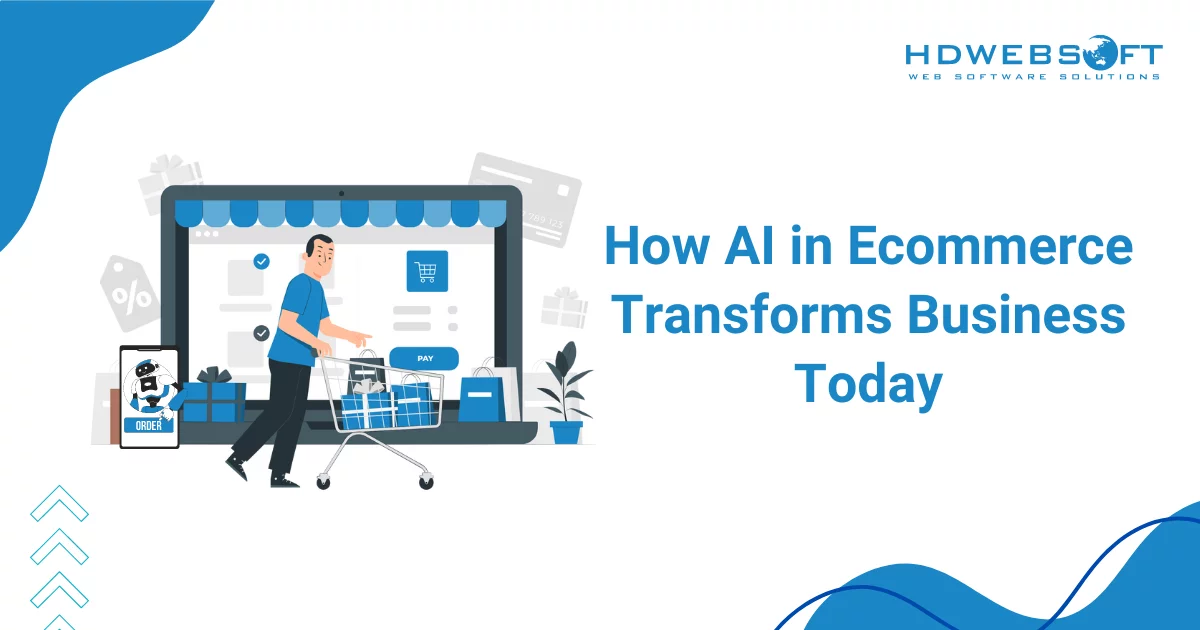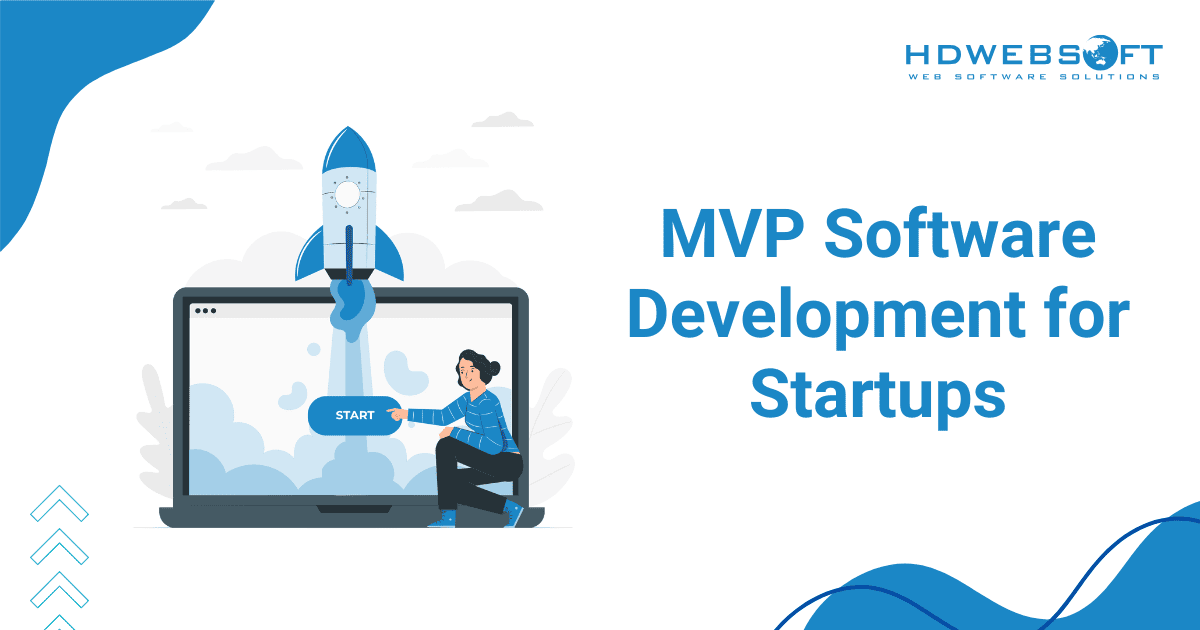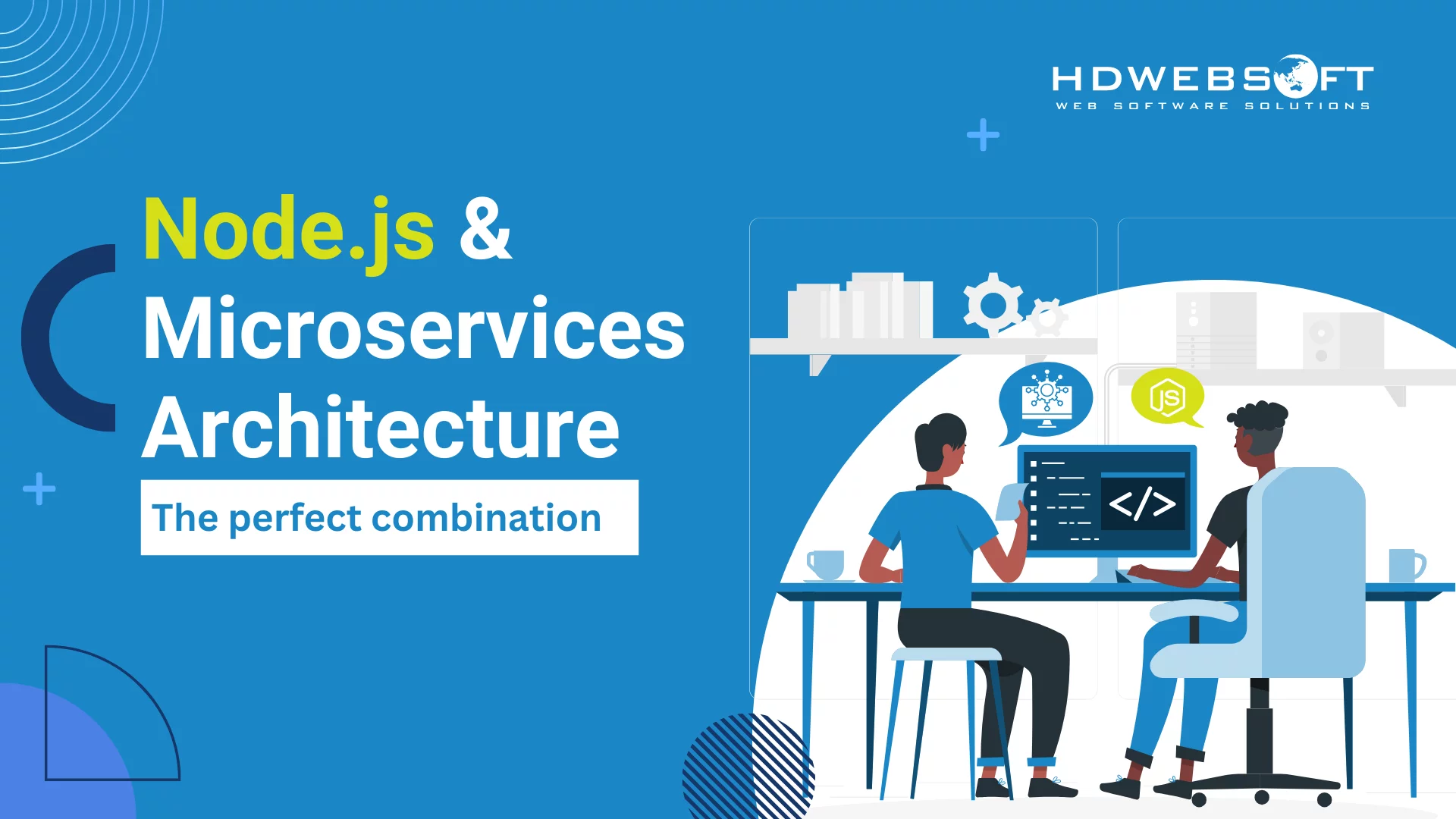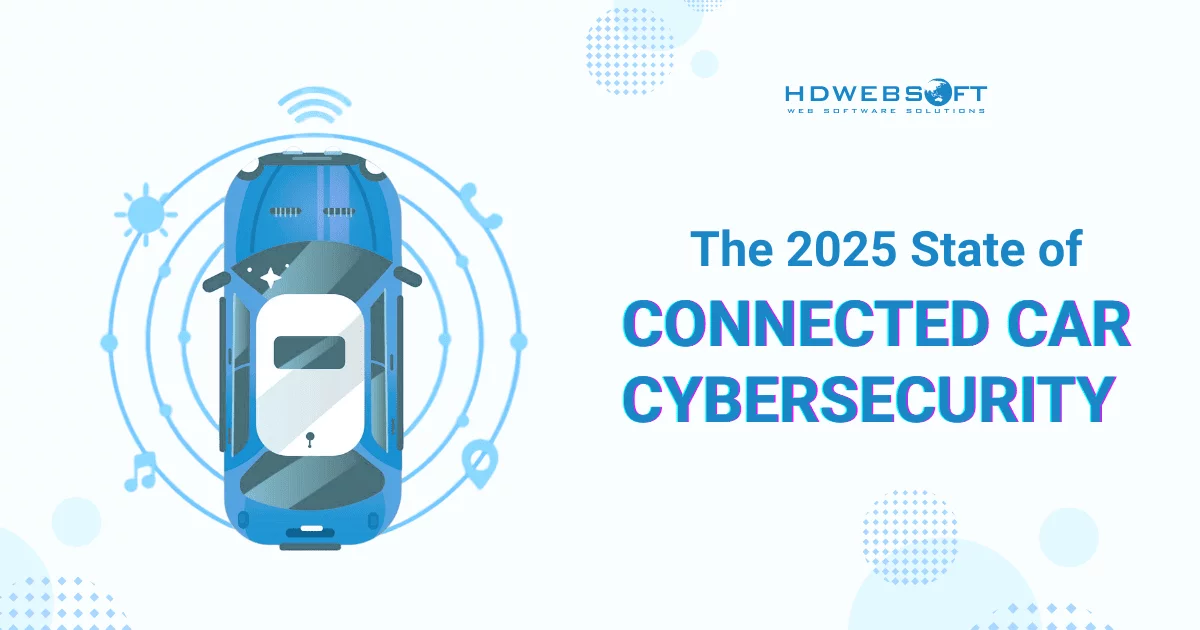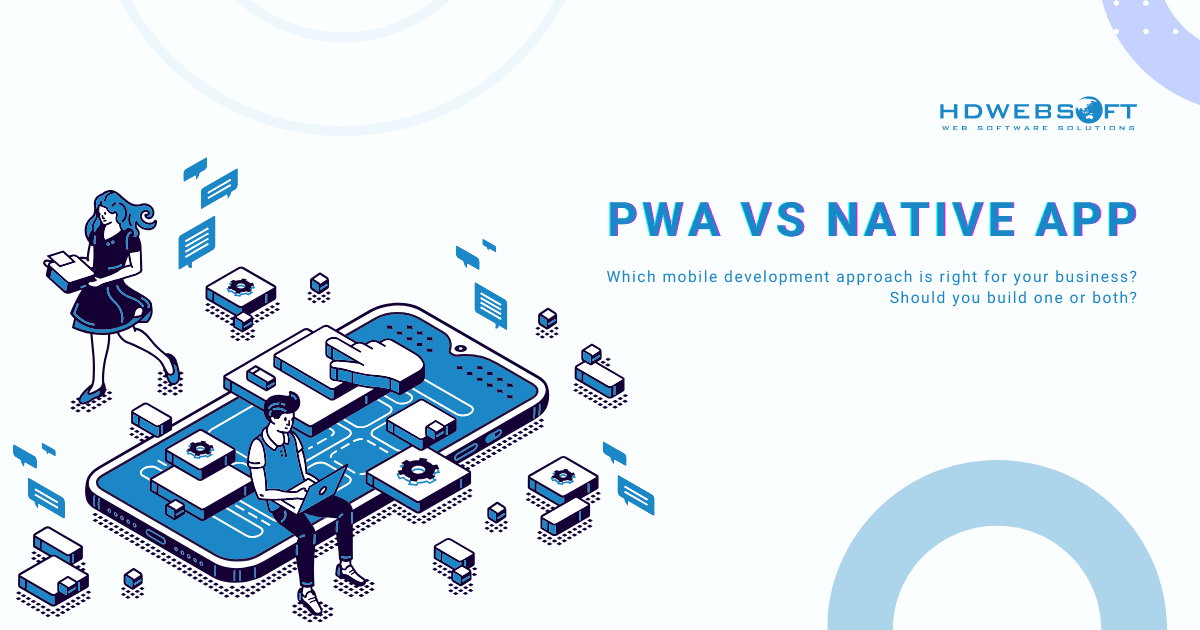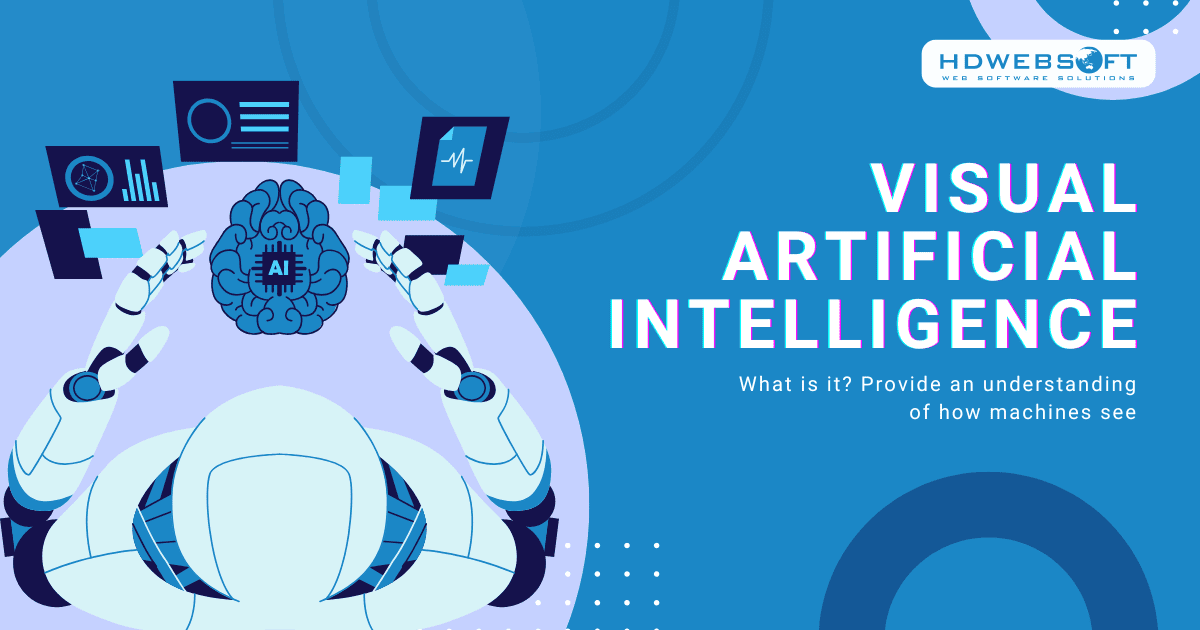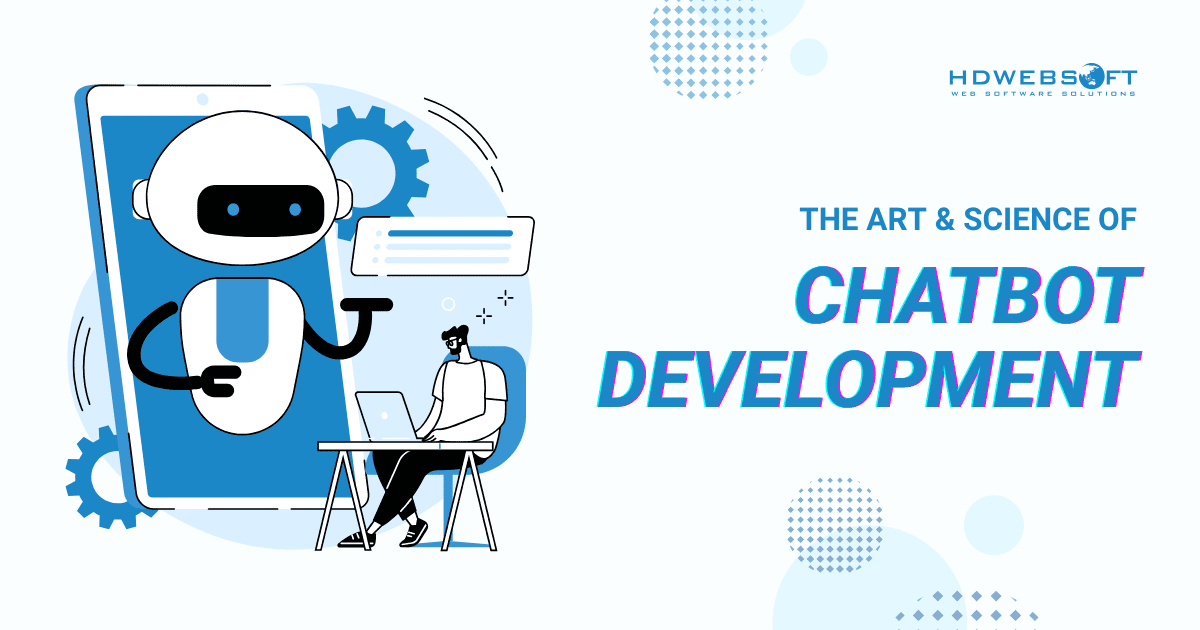
The Art & Science of Chatbot Development
Chatbot development has become a top priority for businesses and organizations looking to enhance customer engagement, streamline operations, and deliver instant support in an increasingly digital world. This growing demand has propelled conversational AI development technology to the forefront of innovation. From simple automated responses to complex, intelligent conversations, chatbots are redefining how we interact with technology.
This comprehensive guide will delve into the technical intricacies of building a modern chatbot and exploring its core components. Furthermore, we’ll dive into the bot lifecycle and crucial considerations for success.
- 1) Types of Chatbots
- 2) Core Technical Components of an AI-Powered Chatbot
- 3) How To Develop A Chatbot
- 3.1) Define Purpose and Scope
- 3.2) Choose Your Technology Stack
- 3.3) Data Collection and Preparation
- 3.4) Design Conversation Flow (Dialogue Design)
- 3.5) Build and Train the NLU Model
- 3.6) Implement Dialogue Logic
- 3.7) Develop User Interface (UI) / Channel Integration
- 3.8) Testing and Iteration
- 3.9) Deployment and Monitoring
- 4) Key Technical Considerations for Advanced Chatbot Development
- 5) To sum it up…
Types of Chatbots
The term “chatbot” encompasses a wide spectrum of conversational agents, each with varying levels of sophistication. Understanding these types is the first step in any chatbot development project.
Rule-Based Chatbots
These are the most fundamental chatbots, operating on a strictly predefined set of rules, keywords, and decision trees. Think of them as interactive FAQs. If a user types “What is your return policy?”, the bot is programmed to recognize the exact phrase or keyword (“return policy”) and deliver a pre-written answer. Hence, their predictability is their strength, making them suitable for very specific, repetitive queries with clear, unambiguous answers.
However, their limitations become apparent quickly. Particularly, they cannot handle variations in phrasing, understand context beyond their immediate rule set, or engage in free-form conversation. Therefore, building these involves extensive manual mapping of questions to answers.
AI-Powered Chatbots (Conversational AI)
This category represents the cutting edge of chatbot development. These intelligent agents leverage Artificial Intelligence, Machine Learning, and Natural Language Processing, and increasingly, Large Language Models (LLMs). These technologies are used to understand, interpret, and respond to human language in a much more natural and dynamic way.
- Natural Language Understanding (NLU): This is their ability to grasp the meaning and intent behind user input, not just keywords.
- Contextual Awareness: They can remember previous turns in a conversation, allowing for more fluid and human-like dialogues.
- Dynamic Response Generation: Instead of just canned replies, they can construct responses on the fly. They often integrate information from various sources.
- Learning Capability: With sufficient data, they can learn and improve their performance over time.
The focus of modern conversational AI development is overwhelmingly on AI-powered solutions. This is because they offer unparalleled flexibility, scalability, and a superior user experience.
For examples of how advanced AI chatbots can transform business operations, see our case studies on AI chatbot integration for digital marketplace and Conversational AI development using Flutter.
Here’s a table of comparison so you’ll get a hang of their differences:
Core Technical Components of an AI-Powered Chatbot
Sophisticated AI-powered chatbot development involves orchestrating several interconnected technical modules. Each of them plays a vital role in the conversational flow.
NLU / NLP Module
This is the “brain” of the chatbot, responsible for interpreting raw human language.
Intent Recognition
The primary function is to determine the user’s goal or purpose. For example, if a user types “I want to book a flight to Paris next Tuesday,” the NLU module identifies the intent as [BookFlight]. This involves training a classification model on numerous examples of user utterances mapped to specific intents.
Entity Extraction (Named Entity Recognition – NER)
Once the intent is understood, the NLU module extracts key pieces of information (entities or “slots”) from the user’s input. This process is often handled through Named Entity Recognition, which identifies and labels relevant data like locations, dates, or names. Consequently, they are crucial for fulfilling the intent.
In the flight booking example, Paris would be extracted as the destination entity, and next Tuesday as the date entity. This often uses sequence labeling models.
Context Management
A critical aspect of natural conversations in chatbot development. The NLU module, often in conjunction with the dialogue manager, tracks the conversation history. If a user says “What about London instead?”, the system understands “London” refers to the [destination] from the previous turn. This involves maintaining a “context window” or “session state.”
Advanced NLP Techniques
Beyond basic intent and entity, sophisticated NLU might involve:
- Tokenization: Breaking text into words or sub-word units.
- Stemming/Lemmatization: Reducing words to their root form (e.g., “running,” “runs,” “ran” -> “run”).
- Part-of-Speech (POS) Tagging: Identifying the grammatical role of each word.
- Dependency Parsing: Understanding the grammatical relationships between words in a sentence.
- Sentiment Analysis: Determining the emotional tone of the user’s input, such as positive, negative, or neutral. They can influence the bot’s response or escalation.
Dialogue Management Module
This module orchestrates the conversation, deciding what the chatbot should do next.
State Tracking
It maintains the current state of the conversation, including all collected information, the active intent, and the history of turns. This is often implemented during chatbot development using a finite state machine or more complex dialogue policies.
Dialogue Policy
Based on the current state, the recognized intent, and extracted entities, the dialogue policy determines the chatbot’s next action. This could be asking a clarifying question (“What date would that be?”), providing an answer or triggering a backend action.
For complex bots, this might involve reinforcement learning to optimize conversational paths.
Handling Interruptions and Digressions
A robust dialogue manager can gracefully handle situations where a user changes topics or asks an unrelated question mid-flow. And then, they return to the original conversation.
Response Generation Module
Next, this component is responsible for crafting the chatbot’s replies.
Predefined Responses
For common or critical scenarios (e.g., greetings, error messages, confirmations), static, pre-written text is often used for consistency and control.
Dynamic Responses
In the context of chatbot development, generating responses for complex interactions typically involves combining extracted entities with predefined templates. For instance, “Your order for {item} has been placed,” or by leveraging a Large Language Model (LLM) to generate more natural, free-form text.
In fact, LLMs allow for highly varied and human-like responses, but require careful prompt engineering. Additionally, a Retrieval Augmented Generation (RAG) setup is often used to ensure factual accuracy and avoid “hallucinations.”
Maybe you haven’t read: The difference between NLP and LLM.
Multi-modal Output
Modern chatbots can go beyond text, incorporating rich UI elements like buttons, carousels, images, videos, and interactive forms. The main purpose is to enhance the user experience and guide the conversation.
Integration Layer (Backend Services)
For a chatbot to be truly useful, it must interact with external systems. This layer connects the chatbot to:
- Databases: To retrieve or store user-specific information, product catalogs, order history, etc.
- APIs integration in chatbot development: To interact with third-party services. Namely, they include payment gateways, CRM systems, inventory management, weather APIs, and booking systems.
- Webhooks: To send real-time notifications or trigger actions in other applications. This layer is crucial for enabling the chatbot to perform actions beyond just chatting, transforming it into a functional tool.
Knowledge Base / Data Source
Acting as a central information source, the knowledge base enables the chatbot to respond accurately to user queries.
- Structured Data: Databases, APIs, or structured documents (product specifications, pricing lists).
- Unstructured Data: FAQs documents, support articles, web pages, internal wikis, chat logs.
- Vector Databases (for RAG): For LLM-based chatbots, knowledge bases are often indexed into vector databases. When a query comes in, relevant chunks of information are retrieved using a similarity search based on vector embeddings. This mechanism supports chatbot development by providing the LLM with contextually rich data to generate an informed response. This is a powerful technique for grounding LLMs in specific, up-to-date knowledge.
How To Develop A Chatbot
Building an AI-powered chatbot is an iterative process that follows a structured development lifecycle.
Before we dive into each phase of the conversational AI development lifecycle, let’s take a look at the summary of steps so you’ll get a hang of what’s included:
Define Purpose and Scope
As you may know, this initial phase is critical for setting the foundation of your conversational AI development project.
Identify Core Use Cases
What specific problems will the chatbot solve?
Will it handle customer support, generate leads, automate internal HR queries, or provide product recommendations? Hence, clearly defining these helps narrow the focus.
Target Audience & User Personas
Who will use the chatbot?
In fact, understanding users’ language, typical questions, technical proficiency, and emotional state when interacting is essential. These factors directly shape the bot’s persona, tone, and overall conversational design.
Channels of Deployment
Where will the chatbot live?
On your website as a widget, within popular messaging apps, or as a voice assistant (Alexa, Google Assistant)? Each channel for chatbot development has unique UI/UX considerations and API requirements.
Success Metrics
How will you measure the effectiveness of the chatbot?
For example: resolution rate, deflection rate, user satisfaction scores, average handling time reduction, lead conversion rate.
Choose Your Technology Stack
Selecting the right tools is paramount for efficient conversational AI development.
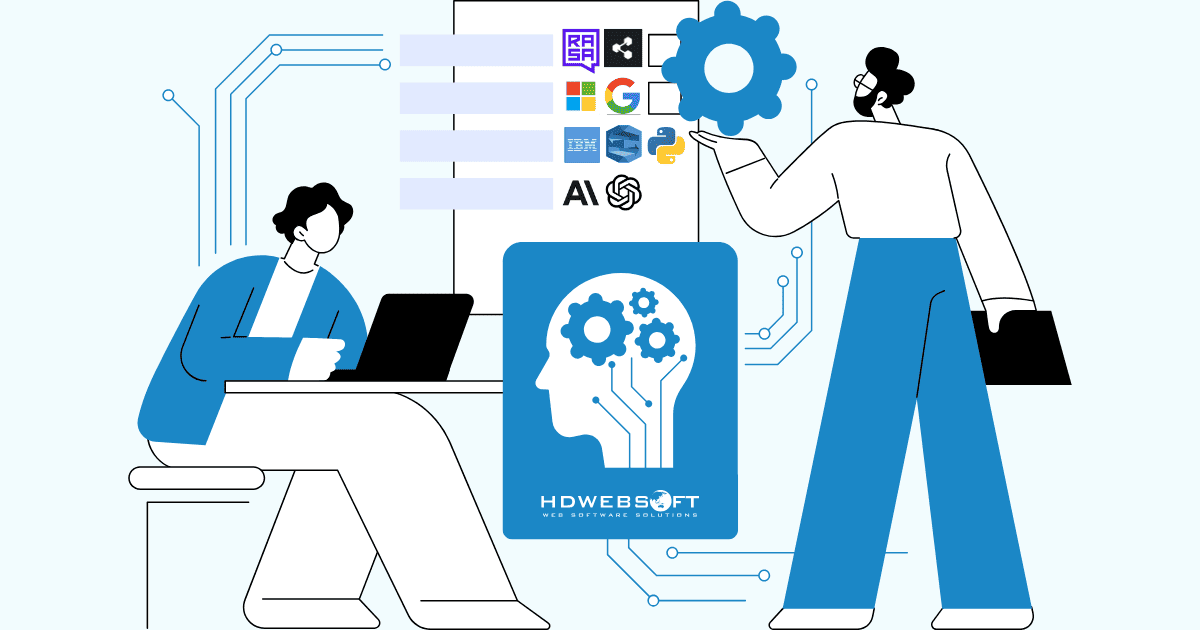
Frameworks/Platforms
Open-Source
- Rasa: A popular choice for building custom, on-premise conversational AI. Offers full control over NLU and dialogue management. Requires strong Python skills.
- Botpress: Another open-source option with a more visual interface, offering a balance between control and ease of use.
- Microsoft Bot Framework: Provides tools and SDKs for building and connecting bots to various channels.
Cloud-Based/SaaS (Platform-as-a-Service)
- Google Dialogflow (Essentials/CX): Offers powerful NLU and dialogue management, easy integration with Google Cloud services, and multi-channel support. In fact, Dialogflow CX is designed for complex, multi-turn conversations.
- IBM Watson Assistant: Provides pre-built content and integrations, strong NLU, and a visual dialogue builder.
- Amazon Lex: The service behind Alexa, offering NLU and speech recognition for building conversational interfaces.
LLM APIs
Here are several popular APIs leveraging cutting-edge generative AI models for chatbot development:
- OpenAI (GPT series): Provides powerful text generation and understanding capabilities.
- Google (Gemini, PaLM): Offers advanced multimodal and language models.
- Anthropic (Claude): Known for its strong performance in conversational AI and safety.
Choosing between a full framework and an LLM API often depends on several factors. Specifically, they are the level of control, customization, and the specific conversational complexity required.
Programming Language
- Python is the de facto standard for AI and ML development due to its rich libraries.
- Node.js is excellent for real-time applications and integrating with web services.
- Java is also used in enterprise environments.
Database
- PostgreSQL or MySQL for structured data
- MongoDB or Cassandra for conversation logs and unstructured data.
- Vector databases are also increasingly used for RAG setups with LLMs.
Data Collection and Preparation
The quality and quantity of your data directly impact the intelligence of your chatbot development solutions.
Training Data for NLU
First, collect diverse examples of user utterances for each intent. Ideally, aim for 10-20 unique examples per intent initially, then scale up as needed. Finally, make sure to include variations in phrasing, synonyms, slang, and common misspellings.
Annotation
Once collected, manually label the intents and entities within your collected utterances. To support this task, tools like Prodigy, Doccano, or even built-in features of platforms like Dialogflow can assist. Even though this process is time-consuming, it is vital for training accurate NLU models.
Knowledge Base Content
Curate and structure your domain-specific information, such as FAQs, product manuals, and internal policies. For LLM-based RAG, this data needs to be chunked and converted into vector embeddings.
Data Augmentation
Techniques like paraphrasing, synonym replacement, or back-translation help generate more training data. As a result, your model becomes more robust, especially with rare intents.
Design Conversation Flow (Dialogue Design)
This is the art of crafting intuitive and effective conversations for chatbot development.
- User Journeys: Map out typical user paths and interactions for your conversational AI development solutions. What steps does a user take to achieve a goal?
- Intent Mapping: Clearly define how each user intent will trigger a specific action or response from the bot.
- Slot Filling Strategies: Determine the sequence in which the bot will ask for necessary information to fulfill an intent. Hence, it’s important to design clear prompts for each missing slot.
- Dialogue Paths & Branching: Design the conversational turns, including happy paths, alternative paths, and how the bot will handle unexpected inputs or digressions. One valuable tip is to integrate data visual tools, such as flowcharts or conversational design platforms, which can be invaluable here.
- Error Handling & Fallbacks: Plan for graceful degradation when the bot doesn’t understand. Your chatbot development solution should provide helpful fallback messages, offer alternative options, or guide the user back on track. Crucially, design a clear path for human handover when the bot cannot resolve an issue.
- Persona Development: Define the chatbot’s personality, tone of voice, and communication style to ensure consistency and align with your brand.
Build and Train the NLU Model
At this point, this is the core machine learning step in conversational AI development. With your chosen framework, feed it your annotated training data. From there, the model learns patterns to recognize intents and extract entities from new, unseen user inputs.
- Model Selection: Choose appropriate NLU models (e.g., neural networks, support vector machines, transformer-based models). These model types fall under various key categories of artificial intelligence, each suited to different aspects of conversational AI development.
- Evaluation Metrics: Continuously evaluate your NLU model’s performance using metrics such as precision, recall, and F1-score. These metrics apply to both intent classification and entity extraction for chatbot development.
- Iterative Training: NLU models often require continuous refinement. As you collect more real user data, retrain and update models to improve accuracy and adapt to evolving user language.
Implement Dialogue Logic
Now, this module dictates the chatbot’s behavior and decision-making.
State Machine/Dialogue Policies
In order to manage flow, program the transitions between different conversational states. This can range from simple if/then conditions to more complex rule engines or ML-driven dialogue policies.
Conditional Logic
From there, define rules for how the bot responds based on the NLU output, collected slots, and external system responses.
Backend Calls (Actions)
When external data is needed, write code that makes API calls to your backend systems. For instance, if the user wants to check an order status, the dialogue logic would trigger an API call to your e-commerce system using the extracted order ID. Be sure to handle API responses and errors gracefully.
Develop User Interface (UI) / Channel Integration
As a matter of fact, your chatbot development solution needs a way to interact with users.
- Web Widget: Embed the chatbot directly into your website using JavaScript and HTML. This provides a consistent experience within your own domain.
- Messaging Platforms: Integrate with popular platforms like Slack, Microsoft Teams, WhatsApp, Facebook Messenger, Telegram, or Viber. Each platform has its own APIs and specific UI capabilities (quick replies, carousels).
- Voice Integration: For voice assistants, integrate with Speech-to-Text (STT) services to convert user speech into text for NLU, and Text-to-Speech (TTS) services to convert the bot’s text responses into natural-sounding speech.
- Custom Applications: Develop a dedicated mobile or desktop application that incorporates the chatbot interface.
Testing and Iteration
Thorough testing is paramount for a successful conversational AI development project.
- Unit Testing: Test individual components (NLU model accuracy, dialogue logic paths, backend integrations).
- End-to-End Testing: Simulate full conversational flows to ensure the chatbot development solution behaves as expected from start to finish. This includes testing happy paths, edge cases, error scenarios, and human handover processes.
- User Acceptance Testing (UAT): Crucially, involve real users (not just developers) in testing the bot and providing feedback. Their natural language and diverse queries will reveal blind spots.
- A/B Testing: Experiment with different conversational flows, response styles, or UI elements to optimize performance metrics.
- Regression Testing: Ensure that new features or bug fixes don’t break existing functionalities.
Deployment and Monitoring
Once thoroughly tested, deploy your chatbot to a production environment.
Deployment
To ensure reliability, host your chatbot on a dependable server or cloud infrastructure. There are many available choices on the market. Whether it’s AWS, Azure, or Google Cloud Platform, each offers distinct features tailored to your business needs.
Monitoring Tools
After deployment, implement robust monitoring to track the set KPIs for the chatbot.
Analytics
In parallel, collect and analyze data on conversation paths, user engagement, frequent queries, and areas where the bot struggles. Tools like Google Analytics, Mixpanel, or specialized chatbot analytics platforms can provide deeper insights into user behavior.
Continuous Improvement
Finally, remember that chatbot development is never truly “finished.” Utilize monitoring and analytics data to pinpoint areas for improvement, retrain NLU models with updated data, and refine dialogue logic. Notably, don’t forget to incorporate new features based on user needs.
Further reading: How to Make an AI Model.
Key Technical Considerations for Advanced Chatbot Development
As you embark on advanced conversational AI development, keep these critical technical aspects in mind:
LLM Integration (if applicable)
- Prompt Engineering: It’s the art and science of crafting effective instructions for the LLM to guide its behavior, tone, and content generation. Well-engineered prompts are essential for ensuring relevant, safe, and accurate responses and preventing “hallucinations” (generating factually incorrect information).
- Fine-tuning vs. In-Context Learning: For more specialized use cases, you might consider fine-tuning a pre-trained LLM on your domain data. This makes the model more knowledgeable about your niche. Alternatively, in-context learning can be effective for many tasks without the need for fine-tuning in chatbot development.
- Cost Management: LLM API usage can incur significant costs, especially with high volumes of complex queries. Thus, you need to optimize API calls, use efficient models, and implement caching strategies.
Retrieval Augmented Generation (RAG)
As for LLM-based chatbots, RAG is a game-changer for factual accuracy and reducing hallucinations. Instead of the LLM generating answers purely from its vast, general training data, the system first:
- Retrieves: Uses the user’s query to search a private, up-to-date knowledge base (e.g., your company’s documents, FAQs). This often involves converting text into numerical “vector embeddings” and performing similarity searches in a vector database.
- Augments: The retrieved, relevant information is then provided to the LLM as additional context within the prompt.
- Generates: The LLM then generates a response based on this specific, retrieved context, significantly improving factual accuracy and relevance.
It’s worth noting that RAG is a crucial, but often misunderstood, concept in modern LLM-based chatbots. Here, we provide a diagram to clarify its mechanism for you.
Scalability
It’s best to design your chatbot architecture to handle increasing user loads and data volumes. Building a scalable solution often involves:
- Microservices Architecture: Breaking down the chatbot development into smaller, independent services.
- Serverless Functions: Utilizing cloud functions for event-driven, scalable components.
- Load Balancing: Distributing incoming requests across multiple instances of your chatbot.
- Containerization: For consistent deployment and easy scaling of your chatbot components.
Security
- Data Encryption: Encrypt sensitive user data both in transit and at rest.
- Access Control: Implement robust authentication and authorization mechanisms for backend integrations and API access.
- Vulnerability Testing: Regularly audit your chatbot for security vulnerabilities.
- Privacy Compliance: Ensure adherence to data privacy regulations (GDPR, CCPA, and more).
Performance Optimization
- NLU Model Inference Times: Optimize your NLU models for fast prediction.
- API Call Latencies: Minimize delays in calls to backend systems.
- Caching: Cache frequently accessed data or responses to reduce redundant computations.
- Efficient Code: Write clean, optimized code for all modules.
Error Handling and Fallbacks
A robust chatbot handles errors gracefully.
- Graceful Degradation: When the bot doesn’t understand, provide helpful, polite messages rather than just repeating “I don’t understand.”
- Clarification Strategies: a critical part of chatbot development, helping bots maintain natural conversation by asking the right follow-up questions.
- Human Handover: Crucially, design a clear and efficient path to escalate complex or unresolved issues to a human agent. It will provide the human with the full conversation context. Consequently, it ensures user satisfaction even when the bot reaches its limits.
To sum it up…
The development of chatbots has evolved from simple automation to sophisticated conversational AI. It’s now offering immense potential for businesses to enhance efficiency, improve customer experience, and gain valuable insights. While the journey involves navigating complex technical components, the strategic benefits are undeniable.
At HDWEBSOFT, we specialize in cutting-edge AI development services, including advanced chatbot solutions. We are committed to iterative testing and continuous improvement, ensuring we build chatbots that not only automate tasks but truly engage and assist your users. The future of digital interaction is conversational, and partnering with HDWEBSOFT for your chatbot development needs is key to staying ahead in this evolving landscape.











